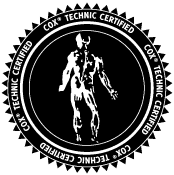Frozen Shoulder and Neck Pain Connection of Pain and Chiropractic Relief
Frozen shoulder, clinically recognized as adhesive capsulitis, is a condition characterized by shoulder pain and stiffness that can significantly disrupt your activities of daily living. When this condition is related to cervical spinal stenosis, the discomfort can be even more challenging. Fortunately, chiropractic care has a viable solution to manage and alleviate these symptoms.
Understanding the Connection: Cervical Spine & Shoulder
What is Cervical Spinal Stenosis? Cervical spinal stenosis is an issue in which the spaces within the spine narrow, creating pressure on the nerves that travel through the spine. This can relate to indicators such as neck pain, numbness, tingling, and weakness affecting the shoulders and arms.
How Does It Cause Frozen Shoulder? The connection between cervical spinal stenosis and frozen shoulder stems from the joint nerve pathways. When cervical spine nerves are compressed, referred pain and restricted movement in the shoulder may result. This is supported by research, including a study by Russo et al., which reported a significant link between cervical foraminal stenosis and adhesive capsulitis. (1) Richmond chiropractic care offers itself for relief!
Benefits of Chiropractic Care
Chiropractic care focuses on diagnosing and treating musculoskeletal disorders, especially those concerning the spine. Here’s how it can be beneficial to patients with frozen shoulder associated with cervical spinal stenosis:
Cervical Spine Stenosis Relief Chiropractors utilize a variety of techniques to ease the symptoms of cervical spinal stenosis. Flexion distraction spinal manipulation aka Cox Technic has been shown to effectively decrease foraminal stenosis and radiculopathy. (2) This method helps to decompress the spinal discs and open the spaces within the spine, lessening nerve pressure.
Cervical Spine Disc Herniation Foraminal Narrowing and Frozen Shoulder Pain Relief Chiropractic adjustments can also directly address the shoulder. Techniques like the Cox® cervical flexion-distraction technique have proven to be efficacious in managing conditions like disc herniation with foraminal narrowing. (3) These treatments help regain mobility to the shoulder joint and reduce pain.
Steps to Effective Chiropractic Treatment
The first step in chiropractic care is a thorough examination to identify the root cause of symptoms. This consists of physical examinations and imaging studies, if necessary. Based on the diagnosis, a chiropractor will create an individualized treatment plan. This plan may involve spinal adjustments, physical therapy exercises, and lifestyle recommendations to promote overall spinal health. Regular monitoring and treatments confirms that progress is being made and that any necessary changes to the treatment plan are employed. Further, numerous studies back the efficacy of chiropractic care for conditions like cervical spinal stenosis and thereby potentially frozen shoulder. For example, Wu et al. (4) discussed the cross-talk between shoulder and neck pain, further assisting the role of Richmond chiropractic care in managing these interlinked conditions.
CONTACT Johnson Chiropractic
Listen to this PODCAST with Dr. Sarah Murrow on The Back Doctors Podcast with Dr. Michael Johnson as she describes a case of neck and shoulder pain relieved and managed with The Cox® Technic System of Spinal Pain Management.
If you’re dealing with the dual challenges of cervical spinal stenosis and frozen shoulder, Richmond chiropractic care could be the answer you need. By getting to the root causes of your pain and delivering targeted relief, your Richmond chiropractor can help you get back mobility and improve your quality of life. Set up a consultation with Johnson Chiropractic today and begin your journey to pain relief!


